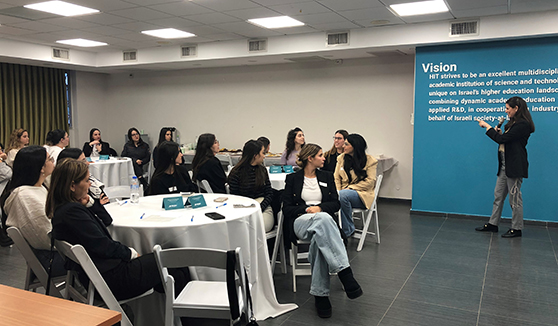Hazard perception skill: Child-pedestrians, especially those in the age range of 5–9-years, are amongst the most vulnerable road users. These youngsters are highly represented in fatal and severe injury road crashes, despite relatively low levels of exposure to traffic. The research investigated child and adult pedestrians’ perception of hazards utilizing a crossing decision task. Participants were requested to observe traffic-scene scenarios presented in a mixed reality dynamic environment simulating a typical Israeli city from a pedestrian’s perspective, and to press a response button whenever they assumed it was safe to cross. Findings have shown that as pedestrians’ age and experience level increased their attentiveness towards potential hazards increases and their ability to anticipate upcoming events while engaging in a road-crossing task was enhanced. Results aim to contribute to the effort of producing intervention techniques which may increase child-pedestrians' attentiveness towards potential hazards and pave the way for reducing their over-involvement in road crashes (Meir, A., Parmet, Y., & Oron-Gilad, T. (2013). Towards understanding child-pedestrians’ hazard perception abilities in a mixed reality dynamic environment. Transportation research part F: traffic psychology and behaviour, 20, 90-107).
Hazard perception training: Young-novice drivers’ poor hazard perception (HP) skills are a prominent cause for their over-involvement in traffic crashes. HP, the ability to read the road and anticipate forthcoming events, is receptive to training. The study explored the formation and evaluation of a new HP training intervention – the Act and Anticipate Hazard Perception Training (AAHPT), which is based upon exposing young-novice drivers to a vast array of actual traffic hazards, aiming to enhance their ability to anticipate potential hazards during testing. Results suggested that inclusion of an active-practical component generates an effective intervention. Advantages of each of the three training methodologies utilized were discussed (Meir, A., Borowsky, A., & Oron-Gilad, T. (2013). Formation and Evaluation of Act and Anticipate Hazard Perception Training (AAHPT) intervention for young-novice drivers. Traffic Injury Prevention, 15, 172-180).
Situation awareness in the military and industrial realm: Examining and improving factory employees' level of situation awareness in challenging or hazardous (mainly military-related and construction organizations) work environments as means for increasing productivity.
Human-machine interaction: Examination of the interaction between humans and machines in order to produce a user interface which is efficient, safe and user friendly. Exploring the cognitive and physiological aspects of human performance (decision making, situation assessment, workload and stress) and their influence on the design of diagnostic and decision support systems.
Human factors in information technology: The interaction between information technology and human factors engineering. Modeling human performance in engineering systems and exploring techniques for improving human-machine interaction.
Project management: Examining human factor safety and productivity from a project management perspective. Specifically, evaluating the optimal resource allocation in large-scale projects (mainly in the construction realm). Explores the coordination between the manager and subcontractors required for maintaining a high cost-benefit ratio.
Quality management: Examination of the relationship between total quality management practices, organizational culture, performance and customer satisfaction in military-related organizations.




